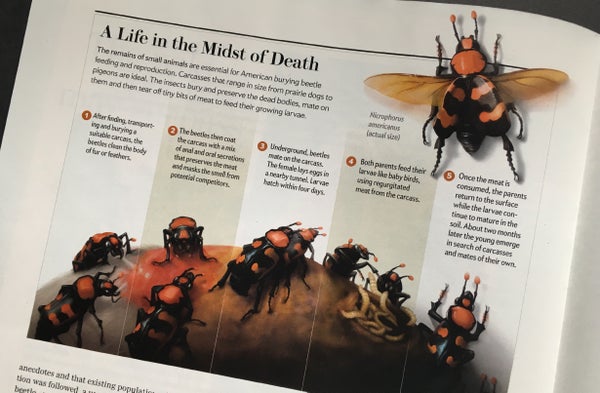This article was published in Scientific American’s former blog network and reflects the views of the author, not necessarily those of Scientific American
My initial assignment for illustrating Hannah Nordhaus’ December 2017 article about the endangered American Burying Beetle, Nicrophorus americanus, was to represent the beetle’s life cycle. Life cycles are staples of biology illustration, typically using small, separate pieces of art connected by arrows to represent the life stages of a particular organism. The more I learned about N. americanus, however, the more this approach seemed inadequate to showcase the beetle’s fascinating behaviors and striking appearance. So, after further discussion with Scientific American graphics editor Jen Christiansen, my goal shifted from providing a comprehensive accounting of the beetle’s life stages to highlighting some of the more compelling aspects of the insect’s behavior in order to arouse the reader’s interest. And once this primary goal of reader engagement was set, all other decisions—including what to show and how to show it—flowed from there.
In terms of what to show: the beetle’s underground activity on the carcass was clearly rich with visual possibilities, as was its—exceedingly rare in the insect world—co-parenting behavior. The question was how to represent these behaviors with maximum visual impact.
After experimenting with various treatments, including a graphic novel-inspired version, I decided that the most striking solution would be to present all the behaviors in a single, unified scene, set on the “stage” of the progressively rotting carcass. This approach would allow me to show the beetles and carrion close to life size, and would give the effect that the viewer and insect were occupying the same visual space. To supplement this scene, I added a more conventional, unobscured top-down view of the beetle in the upper right corner to give a clearer representation of the insect’s striking coloring and extended wings.
On supporting science journalism
If you're enjoying this article, consider supporting our award-winning journalism by subscribing. By purchasing a subscription you are helping to ensure the future of impactful stories about the discoveries and ideas shaping our world today.
This single scene approach required a graphic device that would signal that the behaviors were occurring not simultaneously, but over time. I settled on simple, numbered panels, designed to be visually recessive to keep the focus on the art, and to cue the reader that these behaviors were sequential and that the scene was to be read from left to right.
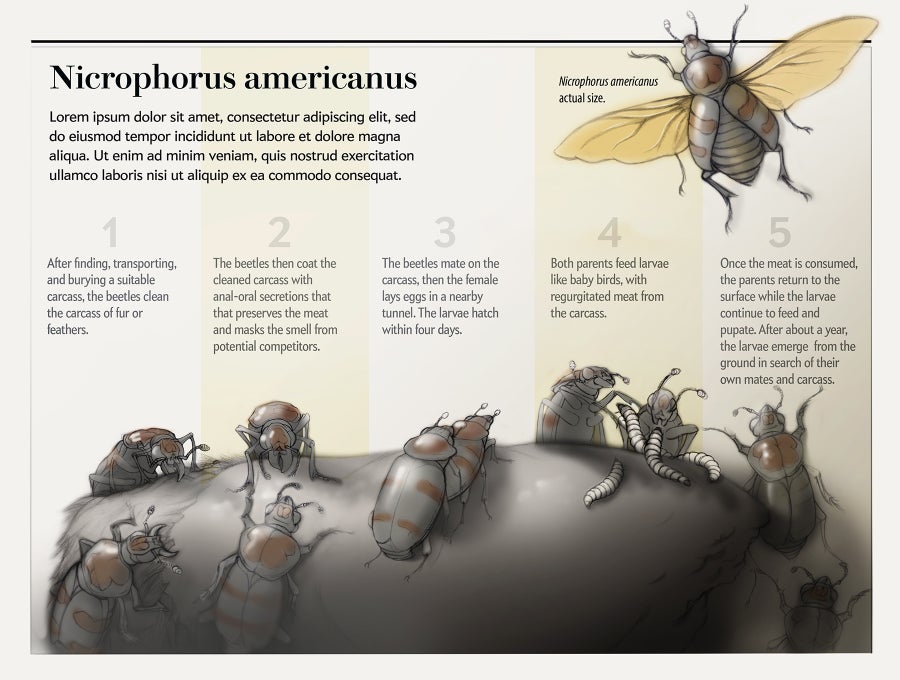
Concept sketch; Credit: Kelly Murphy
Since I planned to represent the beetles from various angles, I needed more reference material than the mostly top-down views available online. I contacted Chris Grinter, the Collection Manager of Entomology at the California Academy of Sciences, to see if they had any specimens of N. americanus to help me better understand the insect from all angles. Chris invited me into the Entomology Department to view their specimens.
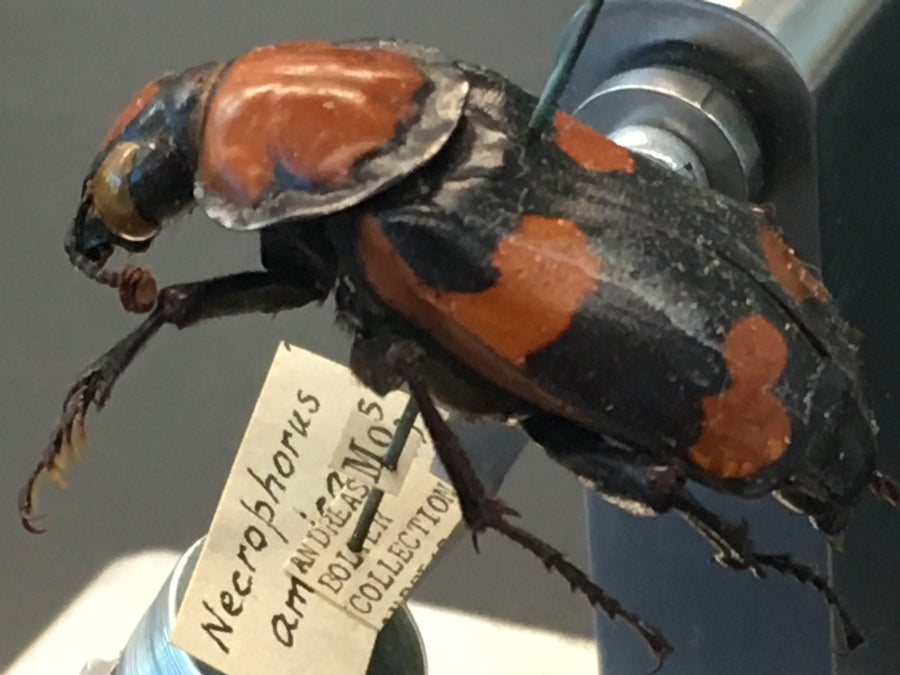
Reference photo from the California Academy of Sciences Nicrophorus americanus specimen; Credit: Kelly Murphy
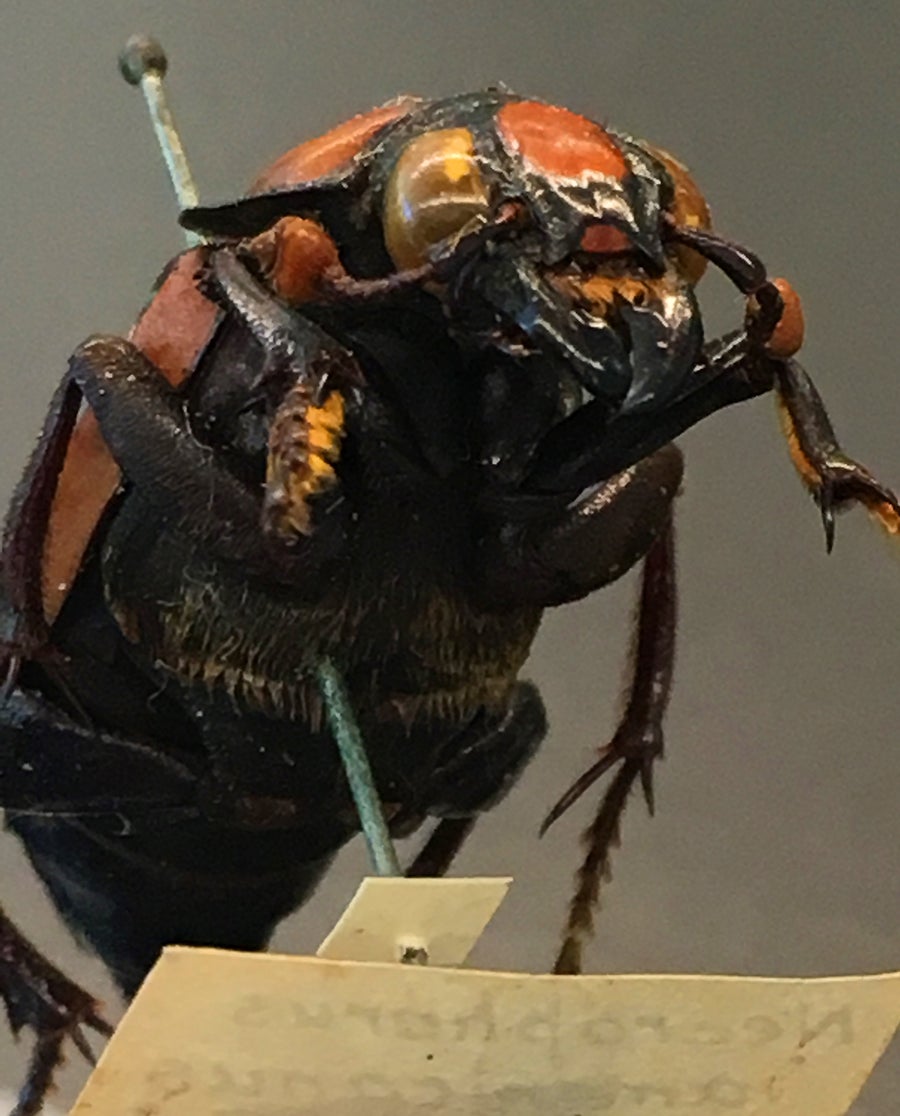
Reference photo from the California Academy of Sciences Nicrophorus americanus specimen; Credit: Kelly Murphy
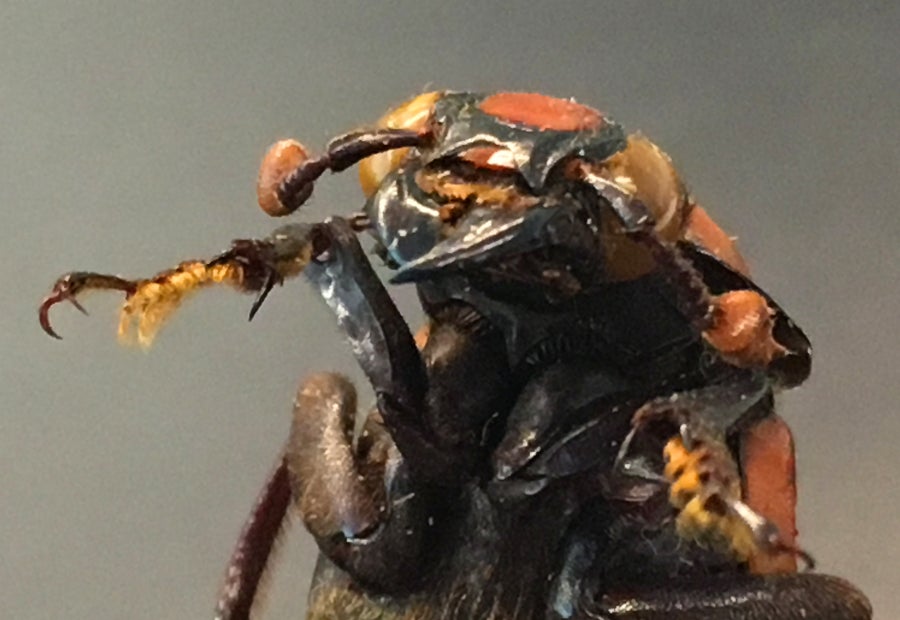
Reference photo from the California Academy of Sciences Nicrophorus americanus specimen; Credit: Kelly Murphy
Once Jen OK’d the general concept sketch and content expert Dr. Wyatt Hoback (from Oklahoma State University) weighed in with feedback and corrections, my next step was to refine the sketch.
At this point in the process, I decided to create a polymer clay model of the beetle and carcass to help me visualize lighting and render surface textures. For the beetle’s body, I used an opaque black polymer clay. I painted the wings in Photoshop, printing them out on transparent acetate, and used translucent polymer clay for parts of the carcass, painted with acrylic mixed with gloss medium and a rough bristle brush to simulate muscle striations.
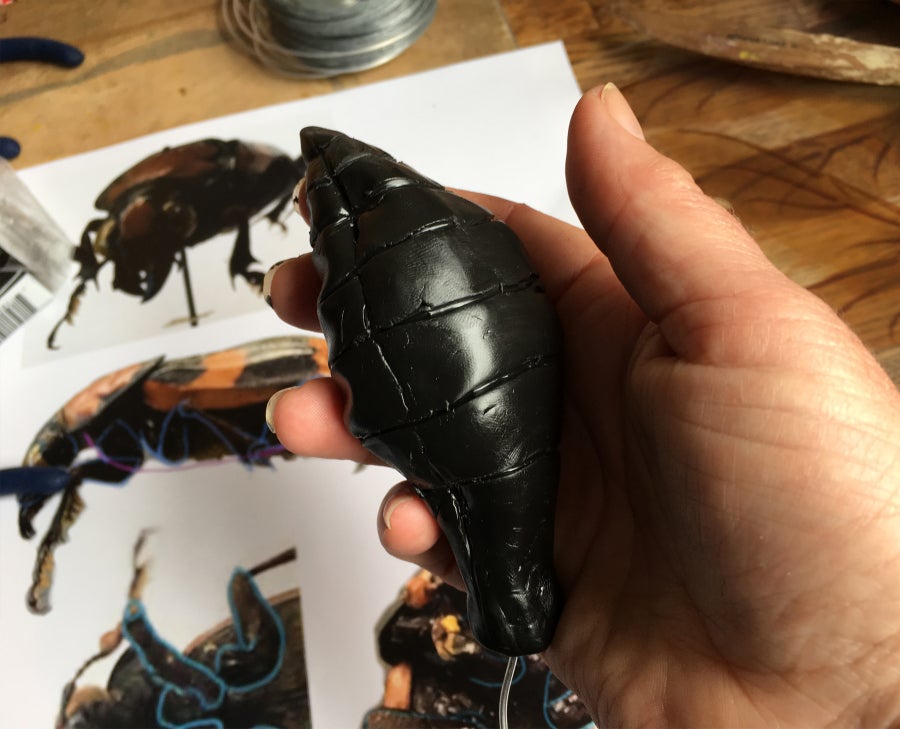
Modeling the abdomen; Credit: Kelly Murphy
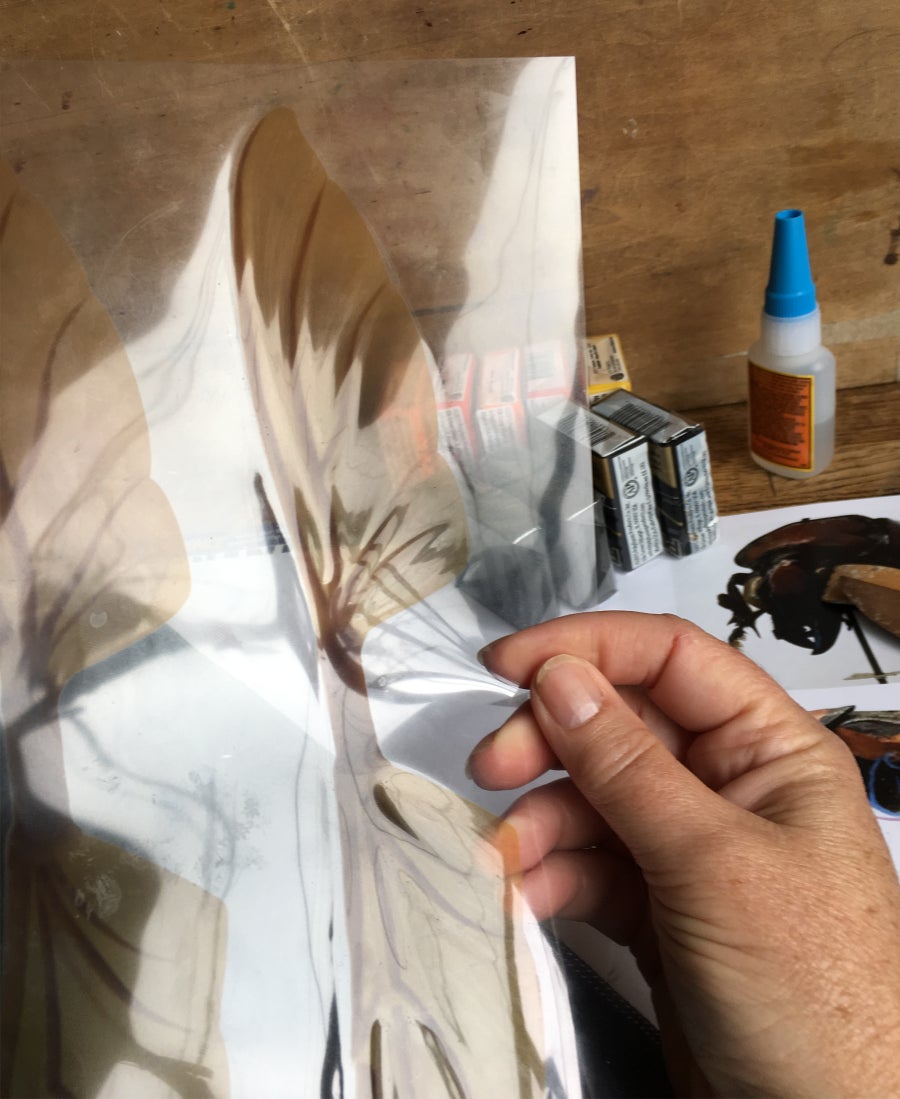
Painted wings printed on acetate; Credit: Kelly Murphy
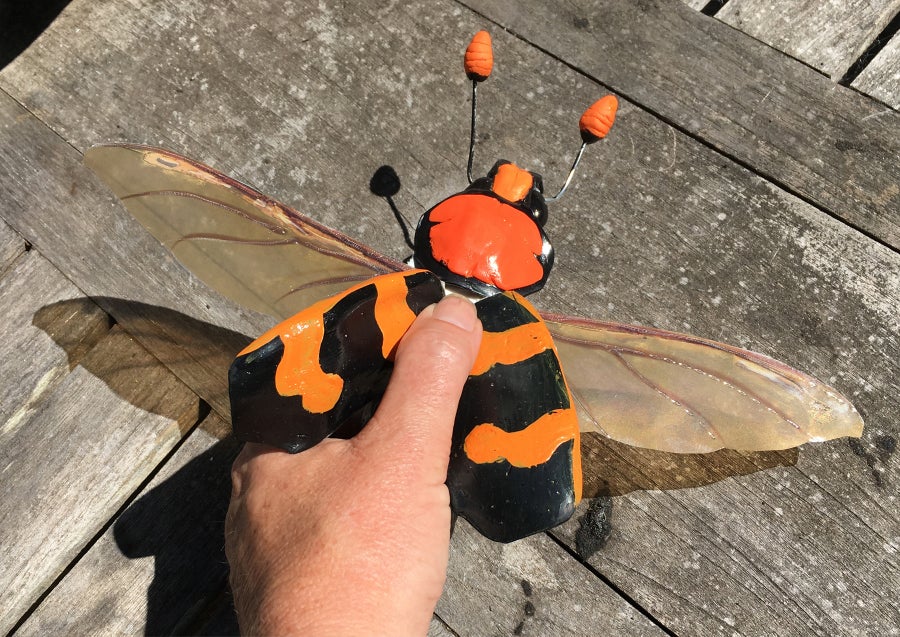
In-progress Nicrophorus americanus model; Credit: Kelly Murphy
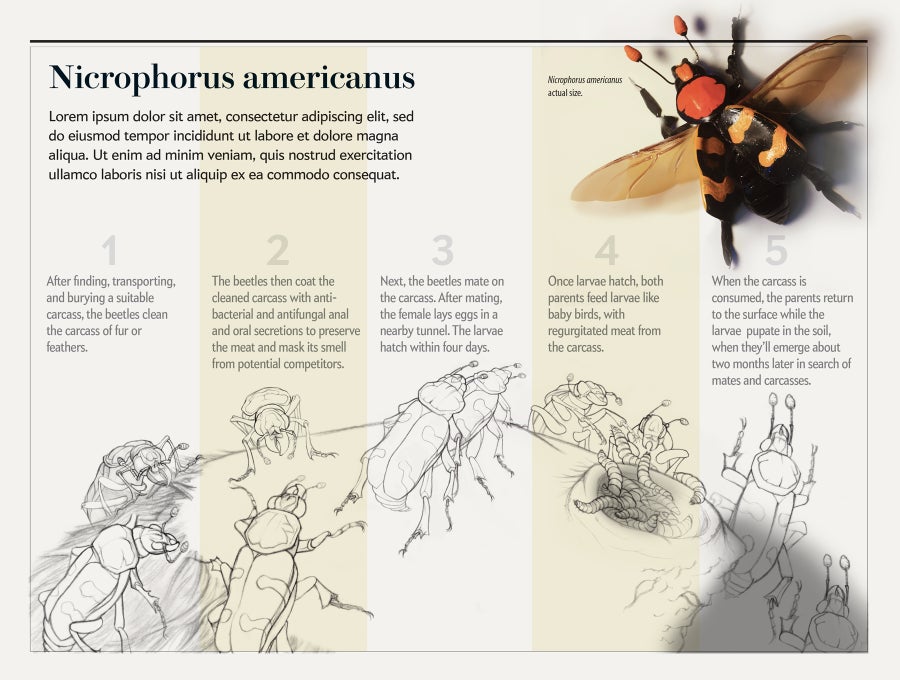
Tight sketch; Credit: Kelly Murphy
The final rendering style was guided by the goal of engaging the reader: while there are many scenarios where details and realism can distract from a figure’s main purpose, in this case I felt that the textural details of fur, slimy meat, shiny beetles, and translucent larva were essential parts of creating an intriguing piece.
I used tone and detail to create a path for the viewer to move through the figure and to help unify the potentially busy composition. To guide the reader’s eye, I employed the greatest contrast and detail to the upper right beetle, positioned directly across from the introductory text, to serve as an introduction to the figure and to the insect’s appearance. Next, the relatively higher contrast and detail in the leftmost beetles were meant to pull the reader’s eye to the beginning of the sequential part of the illustration. Finally, other insect poses were designed to move the reader to the right in a path across the figure, then back up to the starting point of the upper right beetle.
The opaque black and saturated orange of the beetle’s coloring presented compositional challenges, because their vibrant, contrasting bodies would distract the viewer from these focal points. I used shadow to subdue some of these high contrast areas and to create areas of rest for the eye. Leaving some areas relatively obscured in darkness is a strategy more often employed in other forms of illustration than in science art, where clarity is obviously prized. But the goal here was to engage the reader, so I felt a bit of mystery and intrigue were appropriate, and the areas of dark gave a visual nod to the insect’s nocturnal and underground behavior.
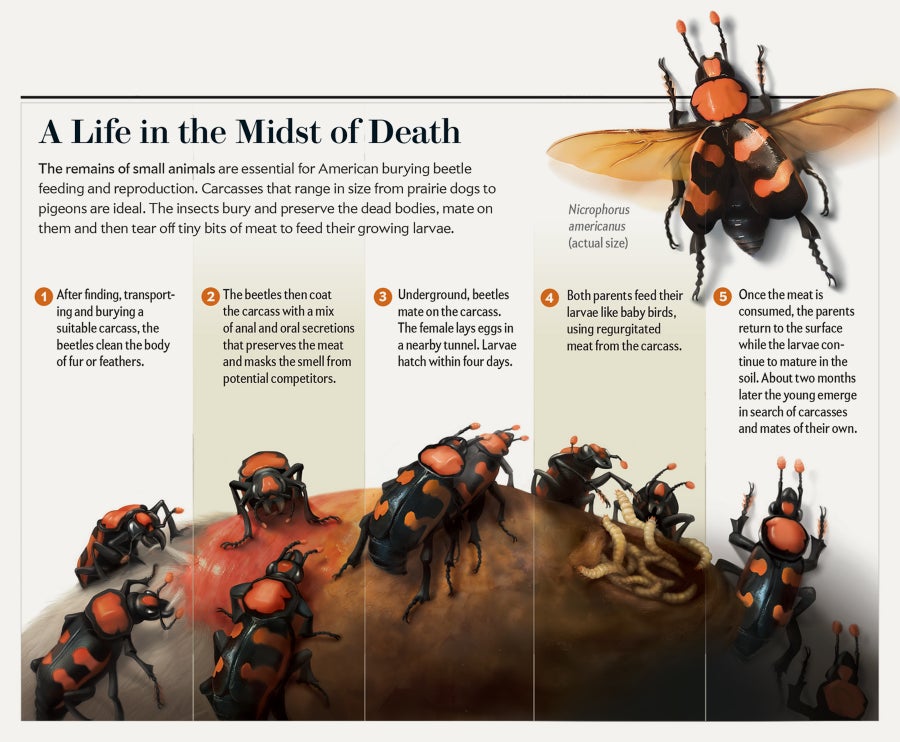
Final illustration; Credit: Kelly Murphy
In the end, I hope my illustration piques the reader’s interest in these fascinating creatures, whose entire life centers on a carcass—and whose life cycle so closely mirrors the cycle of life.
For a closer look at the final product, see “Beetle Resurrection,” by Hannah Nordhaus in the December, 2017 issue of Scientific American.
